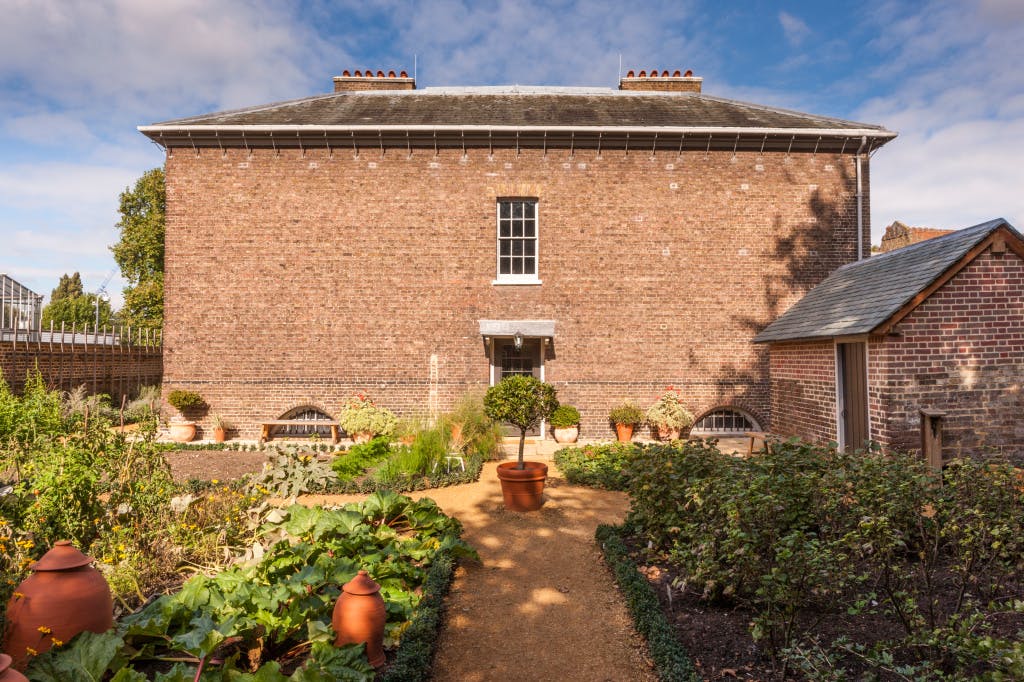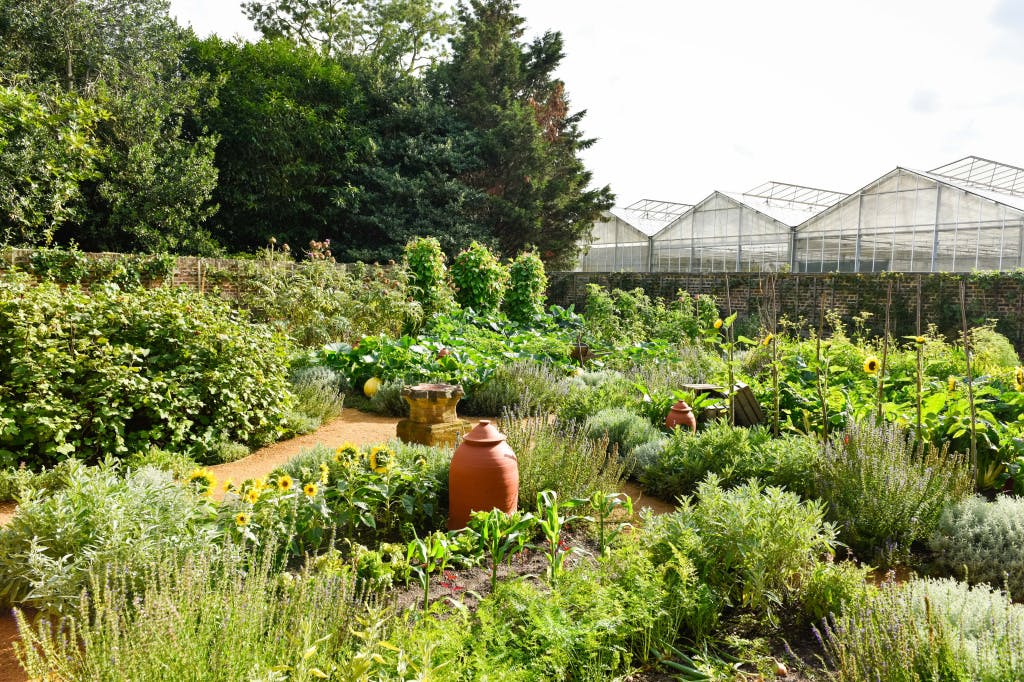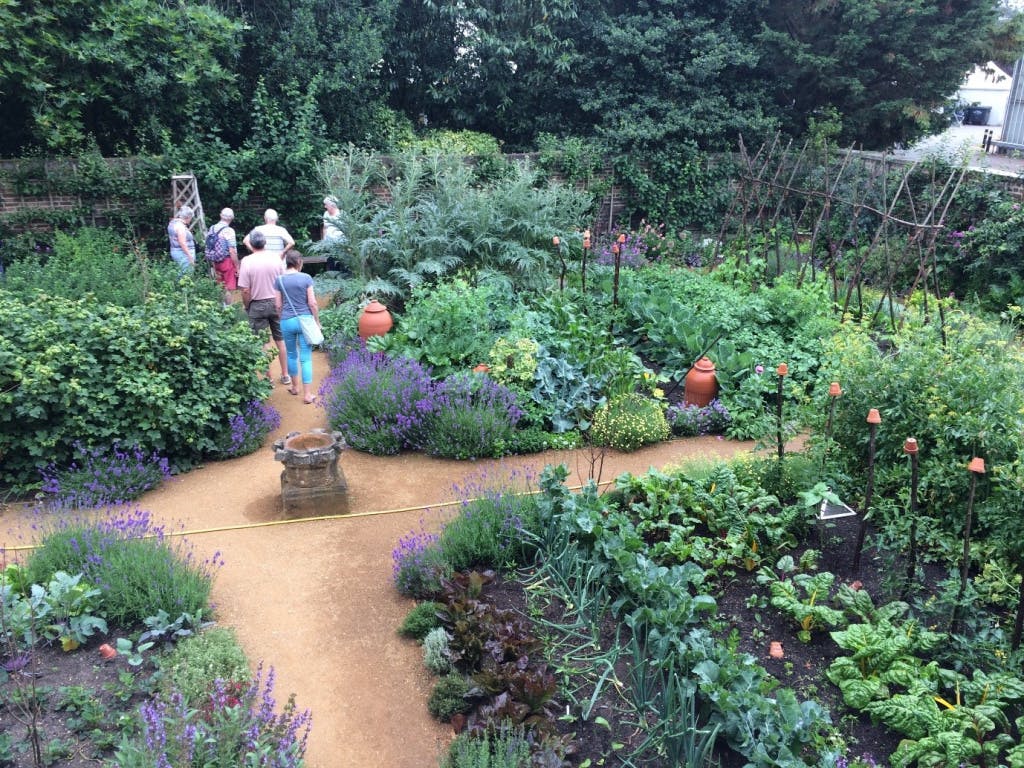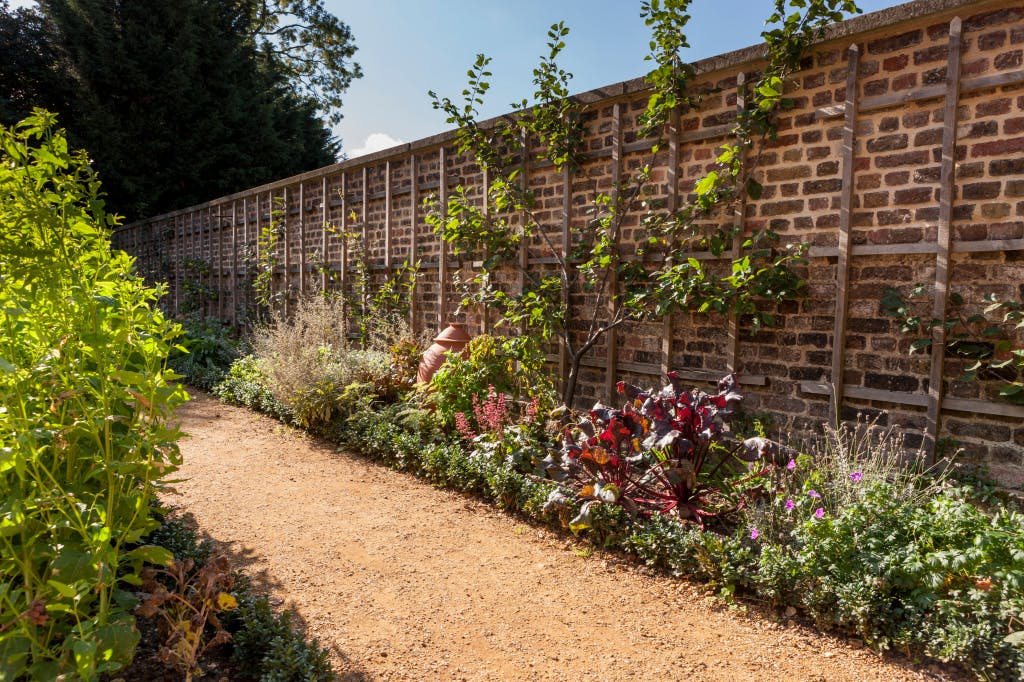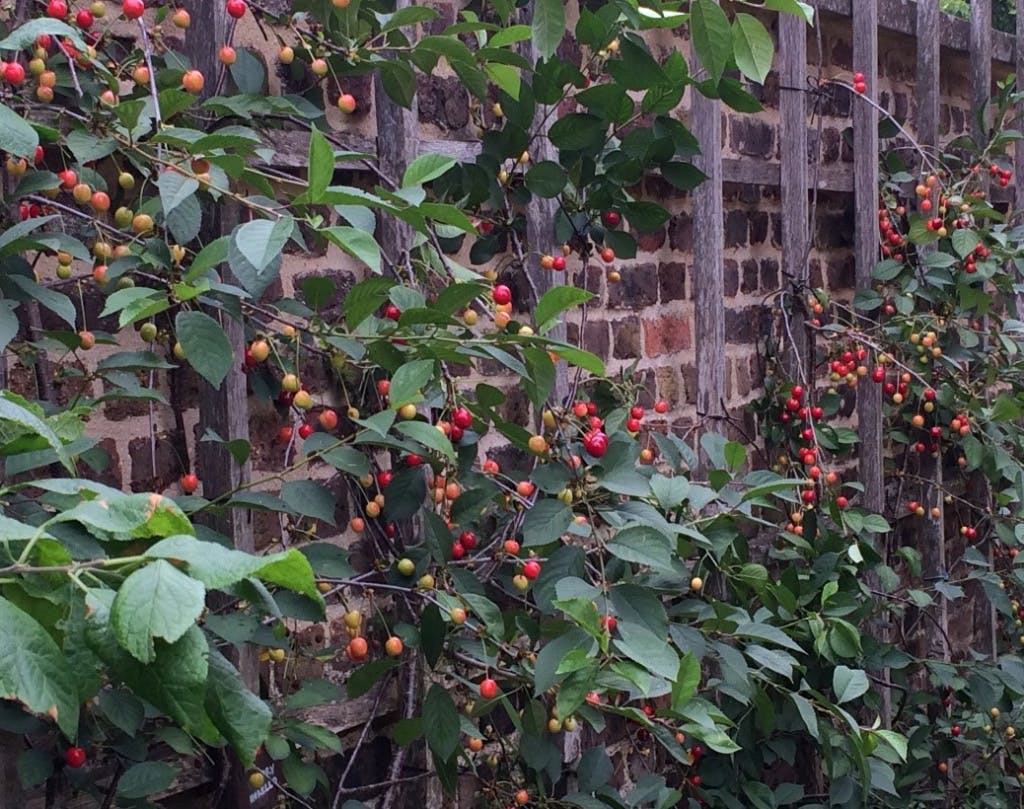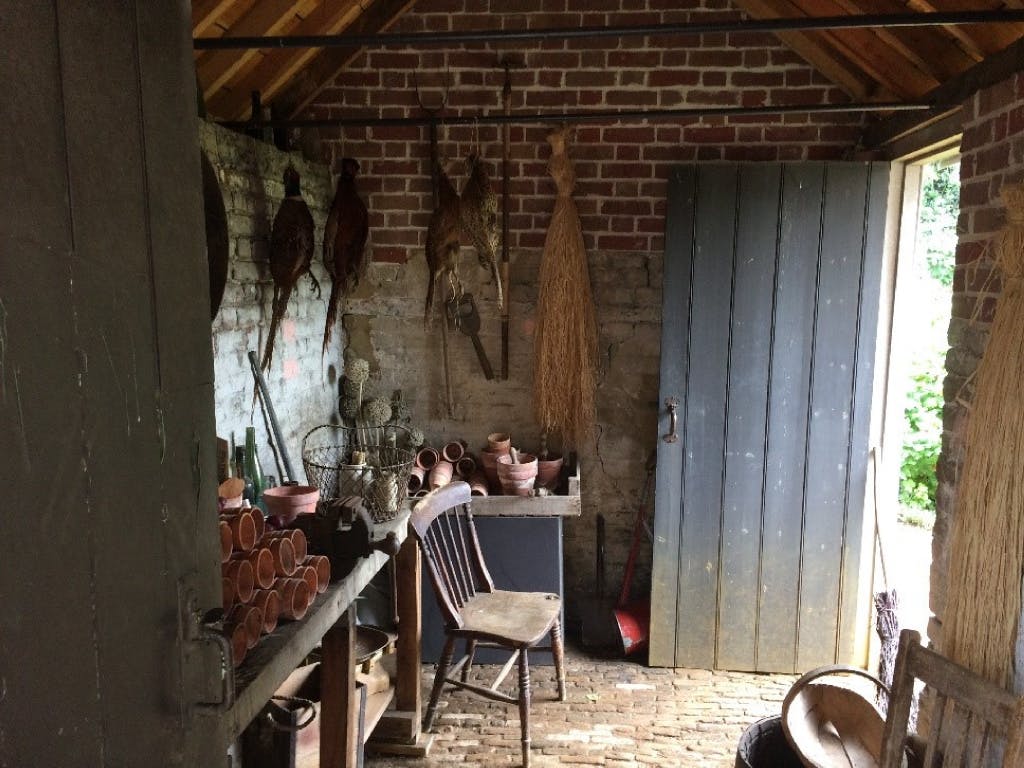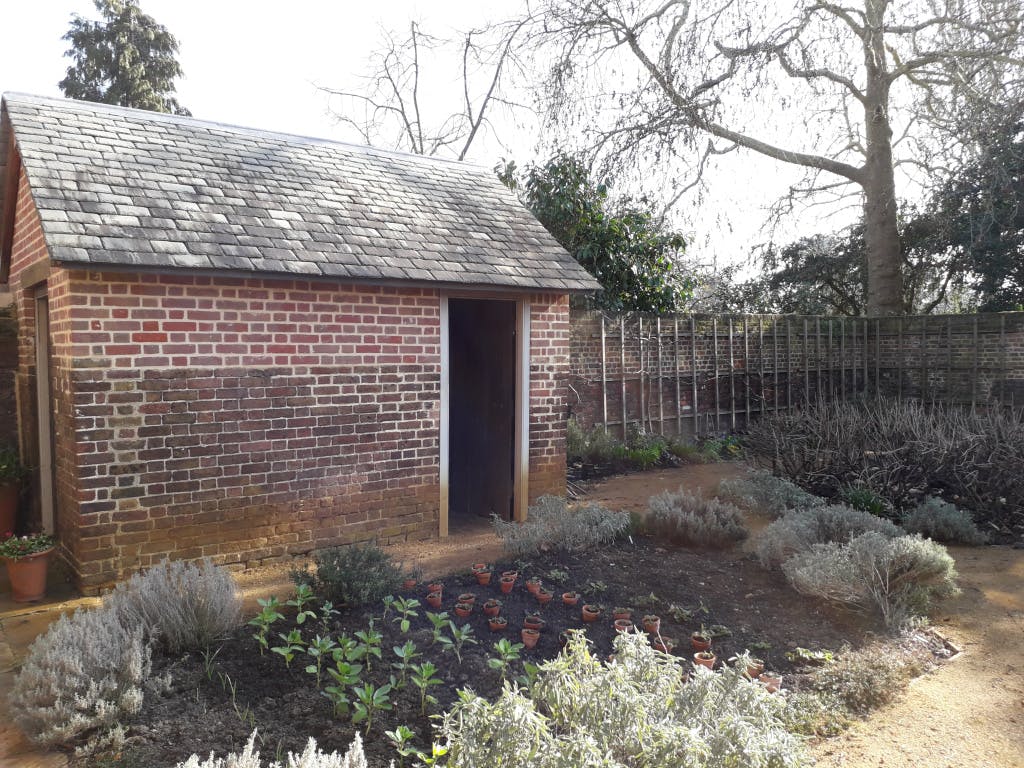A Gardener's Tour of Kew's Kitchen Garden
Date: 10 September 2019
Author:
Dennis Mantle
Originally a small residential garden, the Kitchen Garden at Kew Palace was created and opened to visitors in 2012, complimenting the newly restored Georgian Kitchens. The kitchens were constructed to serve the royal family when they stayed at Kew and were in use from 1789 until they were shut up in 1818. The garden is planted with the kind of vegetables that would have been grown in the 18th century and its produce is used in the kitchens.
Like the palace and the kitchens, the garden is only open seasonally to visitors, from April to October. But work in the garden continues all year round. Let's take a tour...
Image: The Kitchen Garden to the south of the Royal Kitchen at Kew. © Historic Royal Palaces

The main area of this walled garden is divided into four unequal plots with gravel paths topped with oyster shell chips, as were used in the 17th and 18th centuries. One bed is dedicated to growing soft fruit including gooseberries, redcurrants and blackcurrants. The other three have a yearly rotation of crops with the exception of areas of artichokes, rhubarb, lovage, asparagus and strawberries, which are replenished every three to five years. Crop favourites include 'Fat Lazy Blonde' lettuce, sunflowers, yellow and red pear tomatoes and pumpkins.
Each year, leaf mould or horse manure is recycled from the Hampton Court Palace Gardens and Estate and is brought over to be used in the beds at Kew.
As well as the edible crops that supply our cooks in the kitchens, a lot of thought goes into the design of the garden. Each season, different colourful plants are chosen to fill the garden.
Pots, some with bays and hollies, are placed near the entrances to add interest and soften the walls.
A narrow boarder in front of the walls is planted with bulbs for spring colour and mainly perennials for the summer. Paeony, verbena, sweet peas, roses and dianthus within the boarder can also be used for cut flowers.
Morello cherries, damsons and apple tree varieties of Spartan, Edgemont, Russet and Ribston Pippin line the walls trained on a thick oak trellis.
Originally the beds were edged with box hedging to prevent soil washing away and keep the paths clean, however due to box blight, this was removed and replaced with an interesting combination of herbs: lavender, santolina, thyme, hyssop and sage.
No garden is complete without a shed. This one is displayed as a potting area with clay pots, a bench, old tools and even hanging stuffed pheasants.
Chemicals are not used for pests and diseases. We encourage small birds for slugs and caterpillars, companion planting such as marigolds for black and green fly and regular inspections to remove snails and caterpillars by hand.
Among the plants, pots, vegetables and wildlife in this little kitchen garden in the middle of Kew Gardens, I can't fail to love the fat wood pigeon who I admire as he balances precariously on the red currants, feasting until the young branch snaps and he almost falls.
Dennis Mantle
Gardens Estate Team Supervisor
More from our blog

Royal Trees at Hillsborough Castle and Gardens
31 May 2023
Claire Woods, Gardens Manager at Hillsborough Castle and Gardens, reflects on some of the trees planted by members of the Royal Family, which are still available to view in the castle grounds today, and the newest addition for 2023.

The explosive wartime history of the Kew Pagoda
06 June 2023
One of the most surprising periods in the history of the Great Pagoda is its use as a secret testing site during World War II. Curator Polly Putnam picks up the tale of this fascinating discovery.

Creating your own wildflower garden
27 April 2020
You don't need large expanses of land to make your own wildflower meadow providing cover and food for wildlife. Following the success of our wildflowers at Kensington Palace, this year we planted a new wildflower meadow at Hampton Court. You too can do the same with any old patch of lawn in an open, sunny position.

